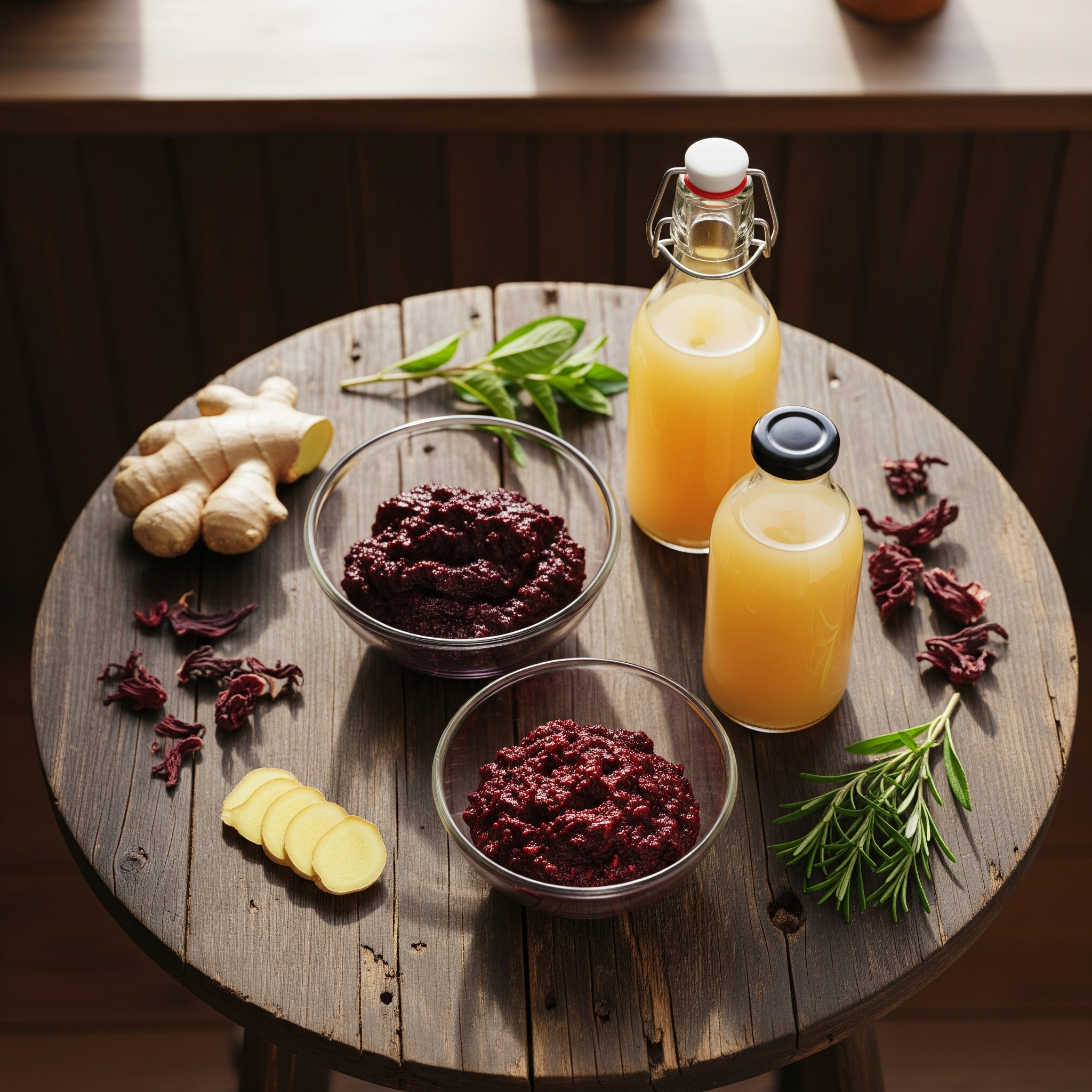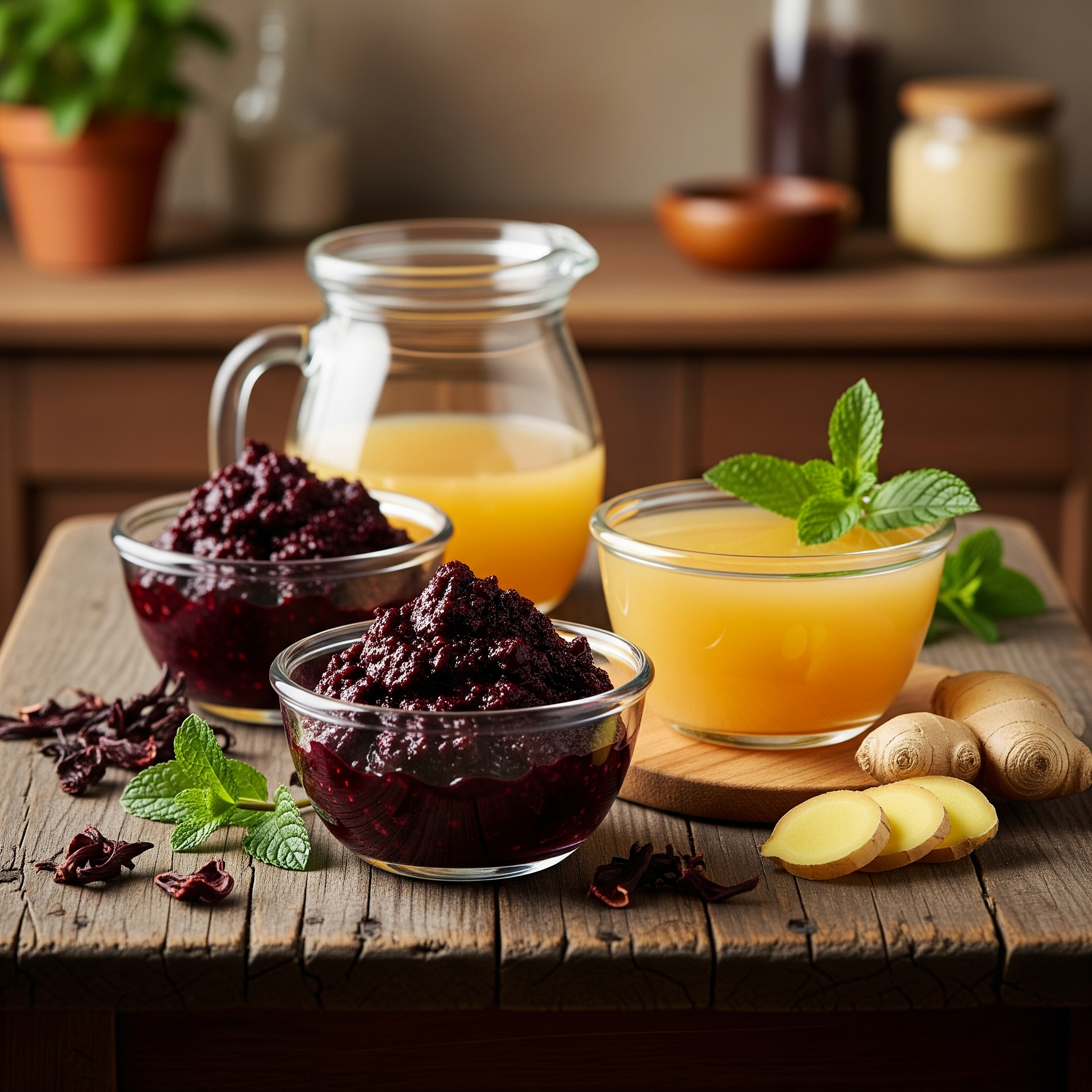For centuries, hibiscus has played a key role in natural hair care across traditional medicine systems like Ayurveda and Siddha. Known for its vibrant blooms and healing properties, this humble plant has helped countless individuals tackle issues like hair thinning, dandruff, premature greying, and even bald spots—without synthetic chemicals or side effects.
If you're looking for a holistic and effective way to improve your hair health, hibiscus might be the ingredient your routine is missing. From nourishing oils to easy DIY hair masks, hibiscus can be used in several ways to address a wide range of hair concerns.
Why Hibiscus Is A Game-Changer For Hair Health
The leaves and flowers of hibiscus (Hibiscus rosa-sinensis) are rich in nutrients and bioactive compounds that rejuvenate the scalp and strengthen the hair shaft from the roots up. Here’s why it works:
-
Vitamin C: Boosts collagen production, strengthening the hair follicles.
-
Amino acids: Promote keratin production, the key protein in hair structure.
-
Antioxidants: Protect the scalp and hair from oxidative stress.
-
Flavonoids: Improve blood circulation to the scalp, encouraging new hair growth.
-
Mucilage: A natural moisturizer that softens hair and prevents frizz.
Scientific studies also support these traditional claims. A 2003 study showed that hibiscus leaf extract positively influenced hair follicle activity and promoted hair growth. Another study highlighted its antibacterial effects, which help maintain scalp health and reduce dandruff.
How To Use Hibiscus For Hair Growth
You can use hibiscus in various forms—fresh, dried, or powdered—to create nourishing treatments at home. Here are the most effective methods to incorporate hibiscus into your hair care regimen:
1. Hibiscus Oil
Why it works: Regular massage with hibiscus oil improves blood flow to the scalp, strengthens hair roots, and nourishes the hair shaft.
How to prepare:
-
Blend 8–10 hibiscus flowers and a handful of leaves into a paste.
-
Heat a cup of coconut oil and mix in the paste.
-
Let it simmer on low heat for 2–3 minutes.
-
Allow the mixture to cool and store in a glass container.
-
Filter if you prefer clear oil, or keep it unfiltered for extra potency.
Usage tip: Massage your scalp with warm hibiscus oil for 10 minutes and leave it on for at least 30 minutes or overnight before washing with a mild herbal shampoo.
2. Hibiscus Shampoo
Why it works: Hibiscus naturally lathers and cleanses without stripping the scalp of its natural oils. This gentle formula supports hair growth and maintains scalp hydration.
How to make it:
-
Boil 15 hibiscus leaves and 5 flowers in 2 cups of water.
-
Let it cool, then strain the liquid.
-
Mix in 1–2 tablespoons of gram flour to form a gentle shampoo base.
-
Use as a regular shampoo for cleansing your scalp naturally.
3. Hibiscus Hair Mask
Why it works: A hibiscus-based mask stimulates hair regrowth by activating dormant follicles, especially helpful for conditions like alopecia or postpartum hair loss.
How to apply:
-
Make a smooth paste using 8–10 hibiscus leaves and flowers.
-
Apply generously to the scalp and affected areas.
-
Leave it on for 1–2 hours, then rinse off with lukewarm water.
-
Repeat once or twice weekly for noticeable improvement.
Additional DIY Hibiscus Hair Masks For Every Hair Concern
Hibiscus works beautifully with other natural ingredients to enhance its effects. Here are some customized mask ideas:

For hair regrowth:
-
Hibiscus + ginger juice: Stimulates blood circulation and activates follicles.
-
How to use: Mix equal parts hibiscus paste and ginger juice. Apply to the scalp and rinse after 20 minutes.
For stronger strands:
-
Hibiscus + yogurt: Adds strength and elasticity to brittle strands.
-
How to use: Mix hibiscus flower paste with 2 tablespoons of plain yogurt. Leave for 30 minutes.
For deeper color and shine:
-
Hibiscus + henna: Enhances natural color while conditioning the hair.
-
How to use: Blend henna powder with hibiscus paste and apply as a hair mask.
For dandruff control:
-
Hibiscus + fenugreek + curd: Antifungal and soothing.
-
How to use: Mix fenugreek powder with hibiscus and curd into a paste. Apply and rinse after 30 minutes.
For scalp detox:
-
Hibiscus + neem juice: Maintains scalp hygiene and balances oil.
-
How to use: Mix equal parts and leave the paste for 20 minutes before washing off.
For volume and protein:
-
Hibiscus + egg white: Strengthens hair structure and promotes volume.
-
How to use: Mix one egg white with hibiscus paste. Apply from root to tip and rinse with cool water.
For split ends and damage repair:
-
Hibiscus + coconut milk: Repairs brittle ends and hydrates.
-
How to use: Combine hibiscus paste with coconut milk. Apply generously and rinse after 30 minutes.
More Powerful Hibiscus Mask Combinations
Hibiscus & Amla Mask
Best for: Volume and root strength
How to prepare:
-
Mix equal parts hibiscus paste and amla powder.
-
Add enough water to make a smooth mixture.
-
Leave on hair for 40 minutes before rinsing with a mild shampoo.
Aloe Vera & Hibiscus Hair Mask
Best for: Moisture, shine, and damage control
How to prepare:
-
Blend aloe vera gel with hibiscus paste.
-
Apply to the scalp and hair length.
-
Leave on for 45 minutes and rinse off.
Onion Juice & Hibiscus
Best for: Stimulating growth in thinning areas
How to prepare:
-
Mix 3–4 tsp each of onion and hibiscus juice.
-
Apply to thinning areas.
-
Rinse after 15 minutes. Use twice a week.
Benefits Of Hibiscus For Hair

1. Strengthens Hair Roots
Hibiscus flavonoids and amino acids improve blood circulation to the scalp, delivering nutrients directly to the follicles. This reduces hair fall and encourages new hair to grow stronger and healthier.
2. Encourages New Hair Growth
Its natural compounds activate dormant follicles and aid keratin production. Over time, this can result in visible thickening of hair and a healthier texture.
3. Deep Moisturization
The mucilage content acts as a natural conditioner. It retains moisture, reduces frizz, and leaves hair soft, manageable, and shiny.
4. Fights Dandruff And Scalp Irritation
Thanks to its astringent and antimicrobial properties, hibiscus helps reduce excessive oil production, clears flakes, and soothes itching and irritation.
5. Delays Premature Greying
The red pigment and antioxidants in hibiscus help preserve natural hair color and support melanin synthesis. It may also impart a subtle crimson tint to greying strands.
6. Helps Prevent Baldness
Research published in Current Drug Discovery Technologies affirms that hibiscus extract is a safe herbal alternative for treating hair loss and promoting regrowth without side effects.
Which Hibiscus Flower Is Best For Hair?

Though hibiscus comes in many colors—red, white, pink, orange, and yellow—the bright red wild variety is considered most potent for hair care. It contains the highest concentration of active ingredients and pigments.
Did You Know?
Red hibiscus is not only beneficial for hair but also imparts a natural reddish tint. It’s a great non-chemical alternative for those who want to enhance their natural hair color without synthetic dyes.
Final Thoughts
From traditional remedies to modern natural hair care, hibiscus has proven itself to be a gentle yet powerful ally. Whether you're battling thinning hair, scalp issues, or early signs of greying, incorporating hibiscus into your routine can help restore balance and promote a healthier scalp environment.
Regular use of hibiscus-based treatments can:
-
Enhance hair texture
-
Boost volume and thickness
-
Maintain scalp health
-
Revive damaged hair naturally
So go ahead—turn your hair care routine into a botanical ritual with hibiscus.
